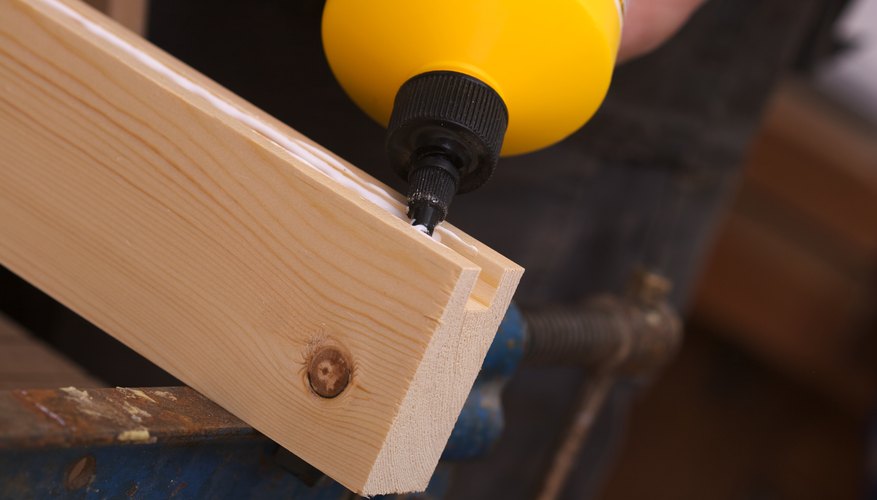Glueing leather to wood is not a difficult process. In fact, the textures of leather and wood make them effective bonding companions. The key to achieving a professional and lasting result is to choose a glue designed for use with these materials. You can use ordinary wood glue, but you will receive better results if you use a glue specifically developed to bond leather to wood. These techniques work equally well with real or faux leather, though you may need to use more glue with the genuine leather, as it tends to be thicker and heavier.
- Glueing leather to wood is not a difficult process.
- You can use ordinary wood glue, but you will receive better results if you use a glue specifically developed to bond leather to wood.
Use scissors to cut the leather to the correct shape to cover the wooden surface you are covering. If the leather is going to cover the top and the edges of your wood, as with the seat of a chair, for example, cut about 5 cm (2 inches) extra inches around each edge. Clean the wood with a damp cloth to remove any oils and dirt from the surface.
Sand the surface slightly to improve the adhesion between the wood and the leather. Brush the surface of the wood and then wipe it clean with a damp cloth to remove sawdust residue.
Place the leather over the wood, and position it until you are happy with the placement. If you are using multiple pieces for a design, position all the leather pieces before gluing any of them into place. Place the leather smooth side up.
Remove the pieces from the wood one at a time and add one drop of glue per 2.5 cm (1 inch) of leather to the backside of the leather pieces. Work the glue into the fuzzy side of the leather. Then, press the leather onto the wood quickly.
- Sand the surface slightly to improve the adhesion between the wood and the leather.
- Work the glue into the fuzzy side of the leather.
Lay a heavy object on top of the leather. Allow the weighted-down leather to dry for 24 hours.
Use a sharp utility knife to trim any excess leather, after the glue has dried.
TIP
If you spill glue onto the wood or in a location where you do not want it, use a damp cloth to wipe up the spilt glue before it dries.
